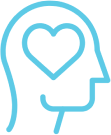Summary
- The UN Sustainable Development Goals were created in 2015 to provide the international community with targets to help achieve a more equitable, sustainable, peaceful and prosperous world.
- The 17 SDGs all speak to different challenges facing the world that must be overcome in order for all people of the world to thrive.
- Embrace Relief is committed to supporting the realization of the SDGs, and our eight programs each directly address at least one goal, while also contributing towards others.
- Learn more about how you can support the achievement of the UN SDGs through Embrace Relief.
The United Nations Sustainable Development Goals (SDGs) are a set of 17 interconnected global objectives established in 2015 to address a wide range of pressing societal and environmental challenges facing the world. These goals were enacted as a comprehensive blueprint for achieving a more equitable, prosperous, and sustainable future for all, aiming to guide collective efforts towards tackling issues such as poverty, inequality, environmental degradation, and peace.
The SDGs advance the work of previous UN development agendas, like the Millennium Development Goals, while adding several key components reflecting the complex nature of today’s global challenges. The MDGs primarily focused on issues related to poverty and health, leaving out key issues such as environmental sustainability, gender equality, education, and economic growth. The SDGs were crafted to rectify these gaps, providing a holistic and integrated framework that acknowledges the intricate web of factors affecting human well-being and planetary health.
The 17 Sustainable Development Goals are:

Meeting these goals by the target date of 2030 will require extensive coordination and dedication of resources by national and local governments, the private sector, and NGOs like Embrace Relief. As a certified humanitarian nonprofit organization, Embrace Relief works with organizations around the world to develop programs in accordance with the UN SDGs.
An Agenda For All Countries, Rich and Poor
These goals are crucial for humanity due to several reasons. First, they acknowledge the interconnectivity of different challenges and emphasize the need for collaborative and multidimensional approaches. This recognition is especially important in a world where environmental degradation, social inequality, and economic instability are deeply intertwined. By addressing multiple dimensions of development simultaneously, the SDGs aim to prevent the exacerbation of one issue at the expense of another.
Second, the SDGs set a universal agenda that applies to all countries, irrespective of their level of development. This universality reflects the understanding that global challenges, such as climate change and conflict, do not respect national borders and require collective action. The goals encourage developed nations to contribute resources, expertise, and technology to support less developed countries in their sustainable development efforts.
Moreover, the SDGs emphasize leaving no one behind, ensuring that progress benefits all segments of society. This commitment to inclusivity is grounded in the principle that a just and equitable world is essential for lasting peace and prosperity. By addressing issues of poverty, inequality, and social exclusion, the SDGs aim to reduce the potential for social unrest and conflict.
In the eight years since the creation of the United Nations Sustainable Development Goals, the international community has been working towards fulfilling a vision of a world where people can thrive while safeguarding the planet’s resources for future generations. By addressing the complex interplay between social, economic, and environmental factors, the SDGs provide a comprehensive framework that guides international cooperation, policy-making, and grassroots efforts. They stand as a testament to the shared responsibility of humanity to create a more just, sustainable, and harmonious world.
A Commitment To Developing The World
Embrace Relief’s commitment to fulfilling the UN Sustainable Development Goals underpins every action we take. Each of our eight programs directly addresses at least one of the 17 goals; because the SDGs are so interconnected, the effects of each program also indirectly address other challenges.
Perhaps the best real-world example of this process is our Clean Water Initiative: By building water wells in sub-Saharan Africa, we directly support the achievement of SDG 6: Clean Water. However, we also know from experience that when communities receive a water well, they see a dramatic reduction in the prevalence of waterborne diseases. This reduces suffering and indirectly promotes SDG 3: Health and Well-being. An abundant supply of clean water also promotes greater food production in a community, inching us closer to the realization of SDG 2: Zero Hunger.
Embrace Relief stands proudly with the UN and the international community in following the Sustainable Development Goals as a roadmap that will lead us all to a more peaceful, more equal, more prosperous world. We will continue to develop our programs in accordance with the SDGs, and we will continue to work to reduce suffering around the world while providing opportunities for people to thrive in a sustainable way.






















